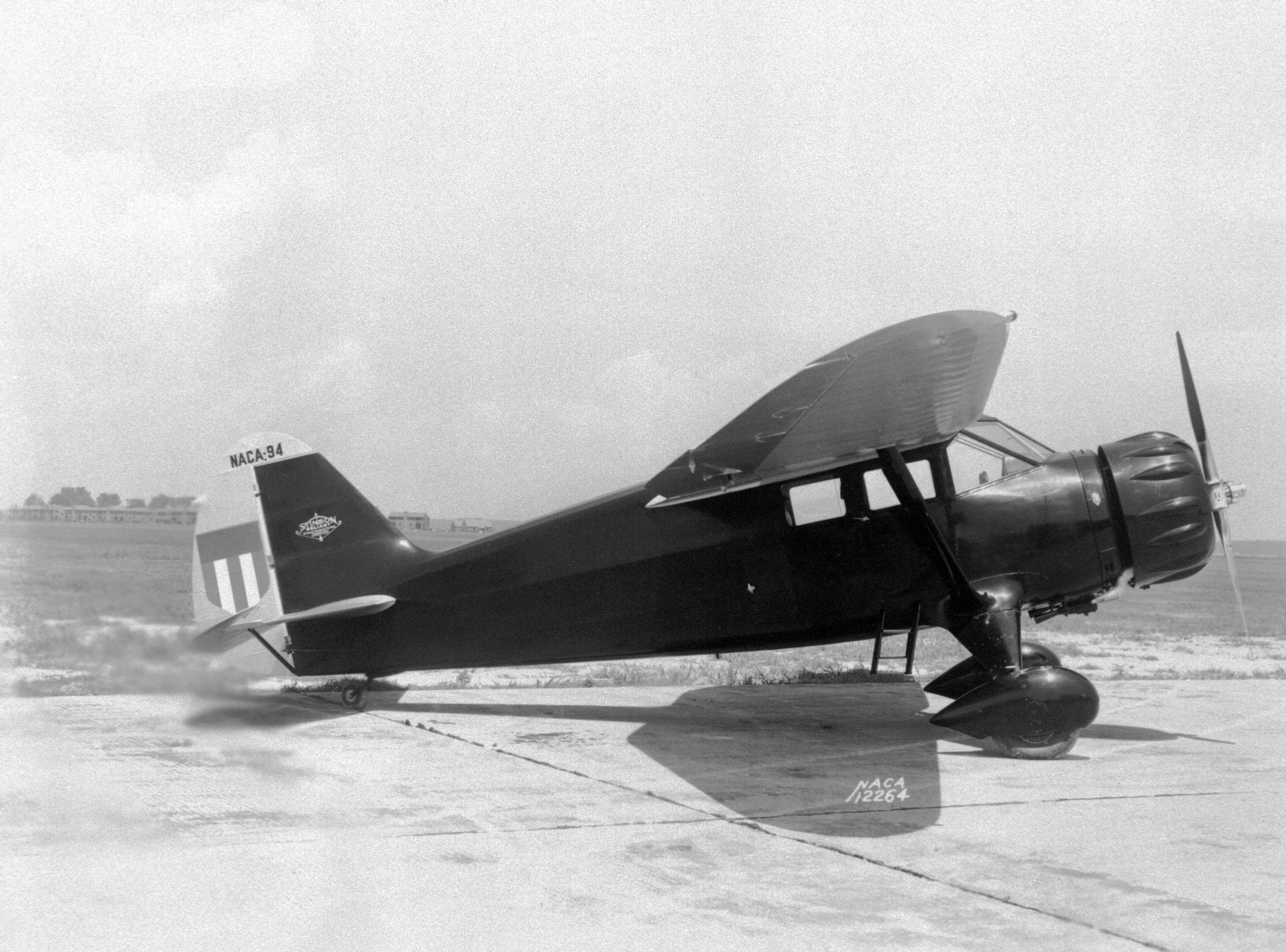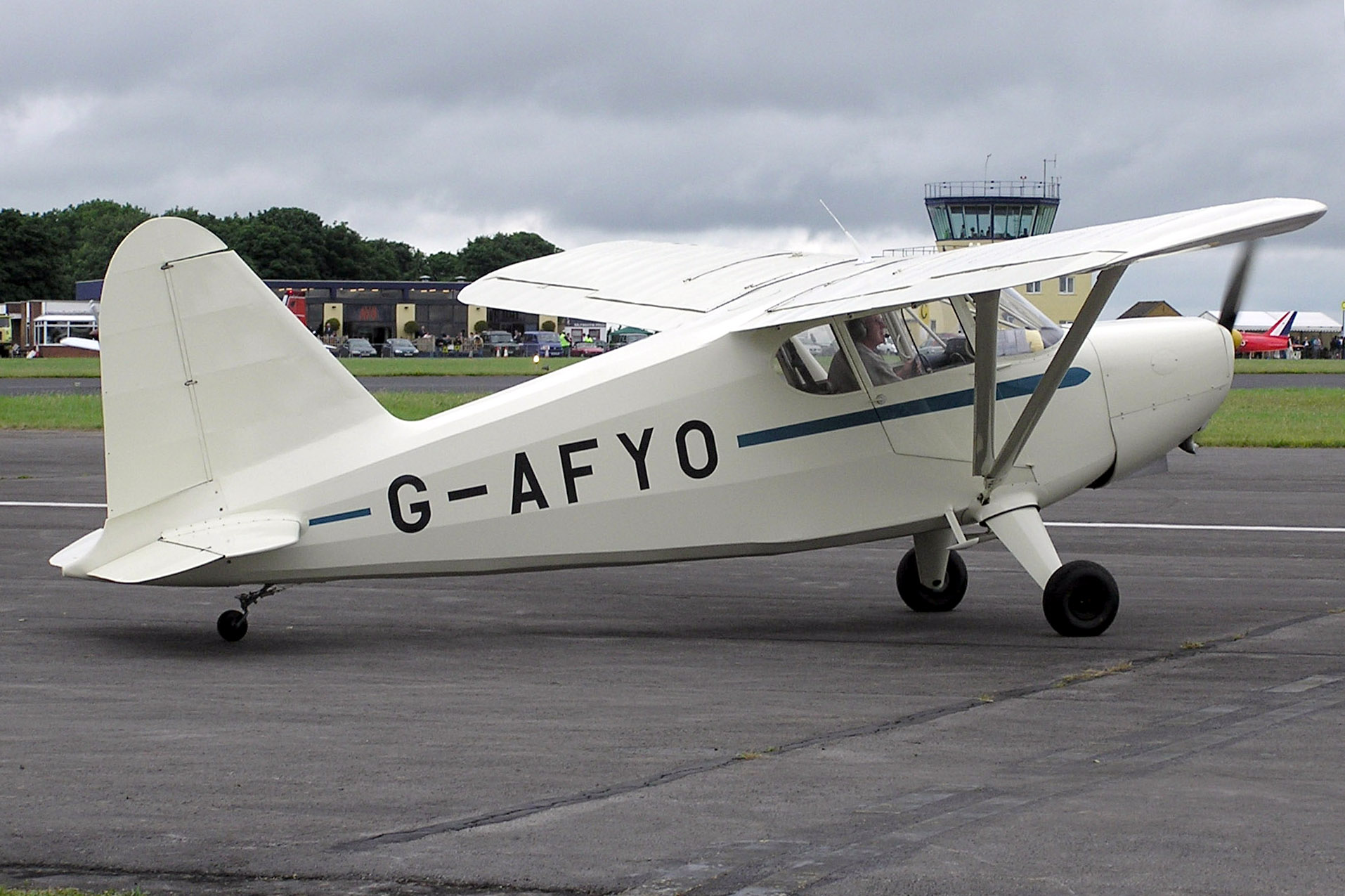Stinson Aircraft Company on:
[Wikipedia]
[Google]
[Amazon]



 The Stinson Aircraft Company was an
The Stinson Aircraft Company was an

"Stinson Aircraft Corporation"
by Roger Guillemette, ''US Centennial of Flight Commission'', retrieved January 6, 2006
Stinson "S" Junior Specifications and Photos
{{Authority control Defunct companies based in Dayton, Ohio Defunct aircraft manufacturers of the United States Piper Aircraft, Inc. Vehicle manufacturing companies established in 1920 1920 establishments in Ohio



 The Stinson Aircraft Company was an
The Stinson Aircraft Company was an aircraft manufacturing
An aircraft is a vehicle that is able to fly by gaining support from the air. It counters the force of gravity by using either static lift or by using the dynamic lift of an airfoil, or in a few cases the downward thrust from jet engines ...
company in the United States between the 1920s and the 1950s.
History
The Stinson Aircraft Company was founded inDayton, Ohio
Dayton () is the List of cities in Ohio, sixth-largest city in the U.S. state of Ohio and the county seat of Montgomery County, Ohio, Montgomery County. A small part of the city extends into Greene County, Ohio, Greene County. The 2020 United S ...
, in 1920 by aviator Edward “Eddie” Stinson, the brother of aviator Katherine Stinson
Katherine Stinson (February 14, 1891 – July 8, 1977) was an aviation pioneer who in 1912 became the fourth woman in the United States to earn the FAI pilot certificate. She set flying records for aerobatic maneuvers, distance, and endurance. ...
. After five years of business ventures, Eddie made Detroit, Michigan
Detroit ( , ; , ) is the largest city in the U.S. state of Michigan. It is also the largest U.S. city on the United States–Canada border, and the seat of government of Wayne County. The City of Detroit had a population of 639,111 at ...
the focus of his future flying endeavors while still flying as a stunt pilot, earning $100,000 a year for his efforts — a huge sum in those days.
Stinson found Detroit's business community receptive to his plans to develop his own airplane. Alfred V. Verville and a group of local businessmen — the Detroit Board of Commerce's Aviation Committee — supported Stinson's plans to establish the Stinson Aircraft Syndicate in 1925 and provided $25,000 to design and build a prototype, an enclosed cockpit, 4-place biplane
A biplane is a fixed-wing aircraft with two main wings stacked one above the other. The first powered, controlled aeroplane to fly, the Wright Flyer, used a biplane wing arrangement, as did many aircraft in the early years of aviation. While a ...
, powered by a Wright Whirlwind J-4
The Wright R-790 Whirlwind was a series of nine-cylinder air-cooled radial aircraft engines built by Wright Aeronautical Corporation, with a total displacement of about and around . These engines were the earliest members of the Wright Whirlwin ...
air-cooled radial engine test flighted at Packard Field in Roseville, Michigan, a northeast suburb of Detroit. Packard Field was the first commercial air field in Michigan, opened in 1919, site of Packard Aviation and the Michigan State School of Aviation, making it a natural location for Stinson to launch his business in the Detroit area.
The Stinson Detroiter SB-1 (for "Stinson Biplane model 1") made its maiden flight from Packard Field on January 25, 1926. The plane not only had a rare (for the period) enclosed cabin, it also had heat (which was a big plus given the cold Michigan winter), upholstered seats and side panels, and even an electric cigar lighter. It became an overnight success, and flights were offered in February to 70 riders thus enabling Stinson to raise $150,000 in public stock capital to go into production. Stinson incorporated in Michigan as the Stinson Aircraft Corporation. On May 4, 1926, Eddie acquired the Stimson (no connection to Stinson and no typo error) Scale Mfg. building in Northville, Michigan, just across the pond from the locally famous Ford Valve Plant, and the first production model SB-1 rolled out just three months later in August 1926. Stinson employed over 250 workers at the Northville factory in 1926.)
The planes were too large to be completely assembled in the Northville plant, so the wings were attached to the fuselage just west of town at the new, local Northville Airfield, a land project owned by a group of village entrepreneurs established to support the Stinson factory. Aircraft were then flown and delivered from here to buyers. Stinson Aircraft Corp. sold a remarkable 18 SB-1 Detroiters by the end of 1926, completing manufacture of 10 aircraft, while the prototype SB-1 was sold to Horace Dodge, son of one of the Dodge Motor Cars founders.
Northwest (today Delta Airlines) sold its first passenger ticket in July 1927, on their first of several SB-1s (and later SM-1s). By this time, the Stinson Corp. had erected their own concrete-floored steel hangar at the airfield, where they could complete the aircraft assembly process of attaching the wings. The finished superstructure fuselages were simply pulled through the center of town to the airfield behind Ford Model TT
The Ford Model TT is a truck made by Ford. It was based on the Ford Model T, but with a longer wheelbase, and a heavier frame and rear axle, giving it a rating of .
Production
When the first three units were produced in 1917, the Model TT was s ...
trucks, while the wings were put on trailers.
Toward the end of 1926, Stinson Aircraft Corp. began developing their next generation SM-1 (Stinson Monoplane type 1), a six-place monoplane initially powered by the more powerful Wright J-5. The maiden flight took place in the Spring of 1927. Coincidentally, the new monoplane had nearly the same wing dimensions and many similar design elements of the Ryan monoplane flown in Lindbergh's famous transatlantic flight of May 1927. This model eventually replaced the biplane completely, and by 1928 the SB-1 was out of production by the time the FAA finally got around to officially certificating it. The early SM-1s were built and flown out of Northville, but the company outgrew its facilities and left Northville by 1929, moving to Wayne, Michigan, which was next to the site of the Detroit Industrial Airport.
Business was steadily increasing, and Stinson delivered 121 aircraft in 1929.
Automobile mogul Errett Lobban (E.L.) Cord acquired 60 percent of Stinson's stock in September 1929, and his Cord Corporation
Cord or CORD may refer to:
People
* Alex Cord (1933–2021), American actor and writer
* Chris Cord (born 1940), American racing driver
* Errett Lobban Cord (1894–1974) American industrialist
* Ronnie Cord (1943–1986), Brazilian singer
* C ...
provided additional investment capital to permit Stinson to sell its aircraft at a competitive price while still pursuing new designs. At the height of the Depression in 1930, Stinson offered six aircraft models, ranging from the four-seat Junior to the Stinson 6000
The Stinson SM-6000 Airliner was a 1930s three-engined (trimotor) ten-passenger airliner designed and built by the Stinson Aircraft Corporation. The SM-6000 was a high-wing braced monoplane with room for a pilot and a cabin for ten passengers. I ...
trimotor airliner.
Eddie Stinson did not live to enjoy the success of his company. He died in an air crash in Chicago, Illinois
(''City in a Garden''); I Will
, image_map =
, map_caption = Interactive Map of Chicago
, coordinates =
, coordinates_footnotes =
, subdivision_type = Country
, subdivision_name ...
on January 26, 1932, while on a sales trip. At the time of his death at age 38, Stinson had acquired more than 16,000 hours of flight time — more than any other pilot at the time.
The Stinson name did not last for long past the end of World War II. Eddie Stinson's death accelerated the assimilation of Stinson Aircraft Corporation into larger corporate entities: first by Cord Corporation, then by Aviation Corporation
Aviation includes the activities surrounding mechanical flight and the aircraft industry. ''Aircraft'' includes fixed-wing and rotary-wing types, morphable wings, wing-less lifting bodies, as well as lighter-than-air craft such as hot ai ...
(AVCO), and later by Consolidated Vultee
Convair, previously Consolidated Vultee, was an American aircraft manufacturing company that later expanded into rockets and spacecraft. The company was formed in 1943 by the merger of Consolidated Aircraft and Vultee Aircraft. In 1953, it ...
. In 1948, the Stinson company was sold to the Piper Aircraft Corporation, which continued to produce 108s for a limited time. Piper transformed an original Stinson design (the "Twin Stinson") into the successful Piper Apache
The Piper PA-23, named Apache and later Aztec, is an American four- to six-seat twin-engined light aircraft aimed at the general-aviation market. The United States Navy and military forces in other countries also used it in small numbers. Origin ...
, the world's first general aviation
General aviation (GA) is defined by the International Civil Aviation Organization (ICAO) as all civil aviation aircraft operations with the exception of commercial air transport or aerial work, which is defined as specialized aviation services ...
all-metal twin-engined modern aircraft.
Aircraft

References
Footnotes
Notes
Bibliography
"Stinson Aircraft Corporation"
by Roger Guillemette, ''US Centennial of Flight Commission'', retrieved January 6, 2006
External links
Stinson "S" Junior Specifications and Photos
{{Authority control Defunct companies based in Dayton, Ohio Defunct aircraft manufacturers of the United States Piper Aircraft, Inc. Vehicle manufacturing companies established in 1920 1920 establishments in Ohio